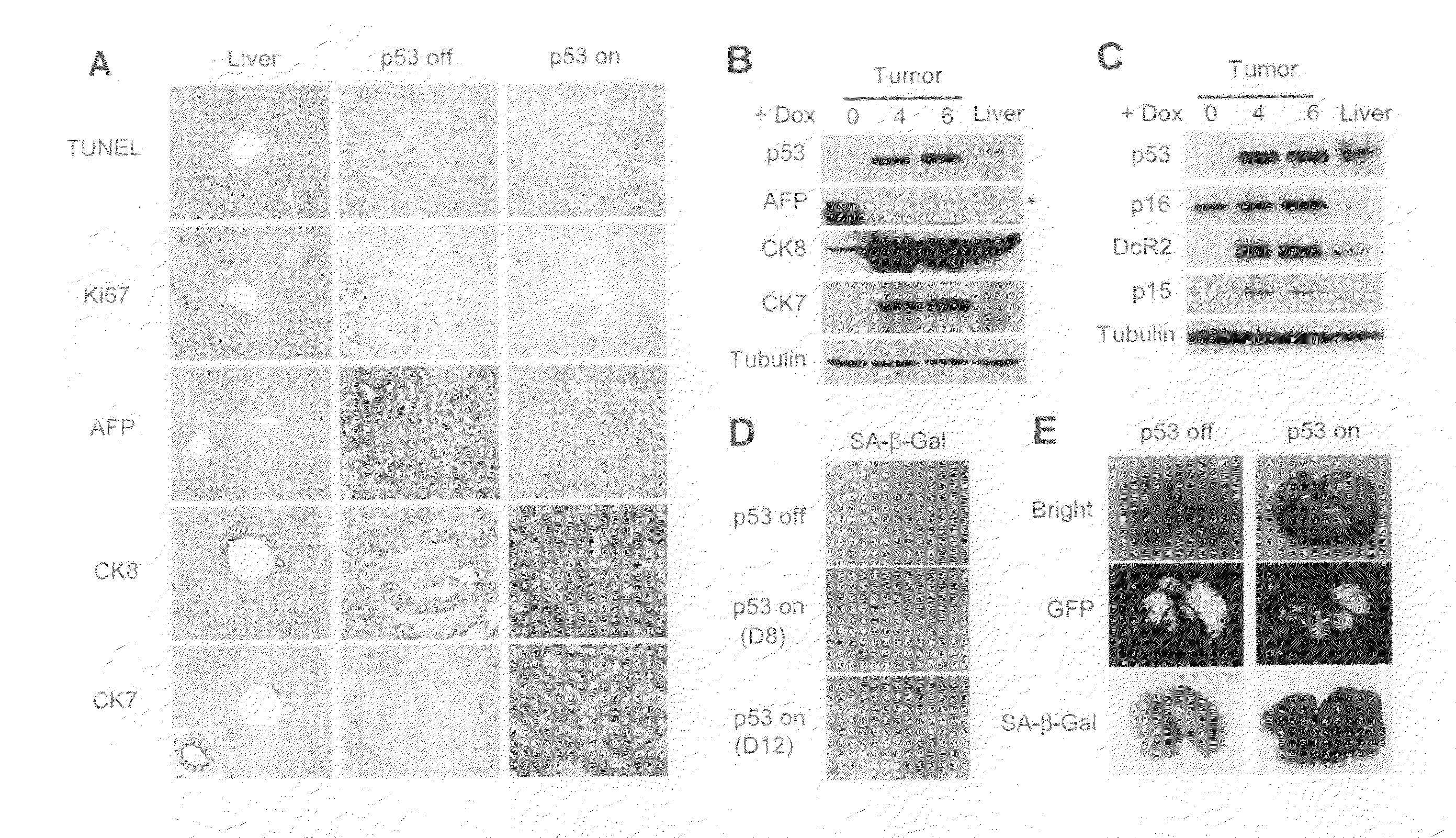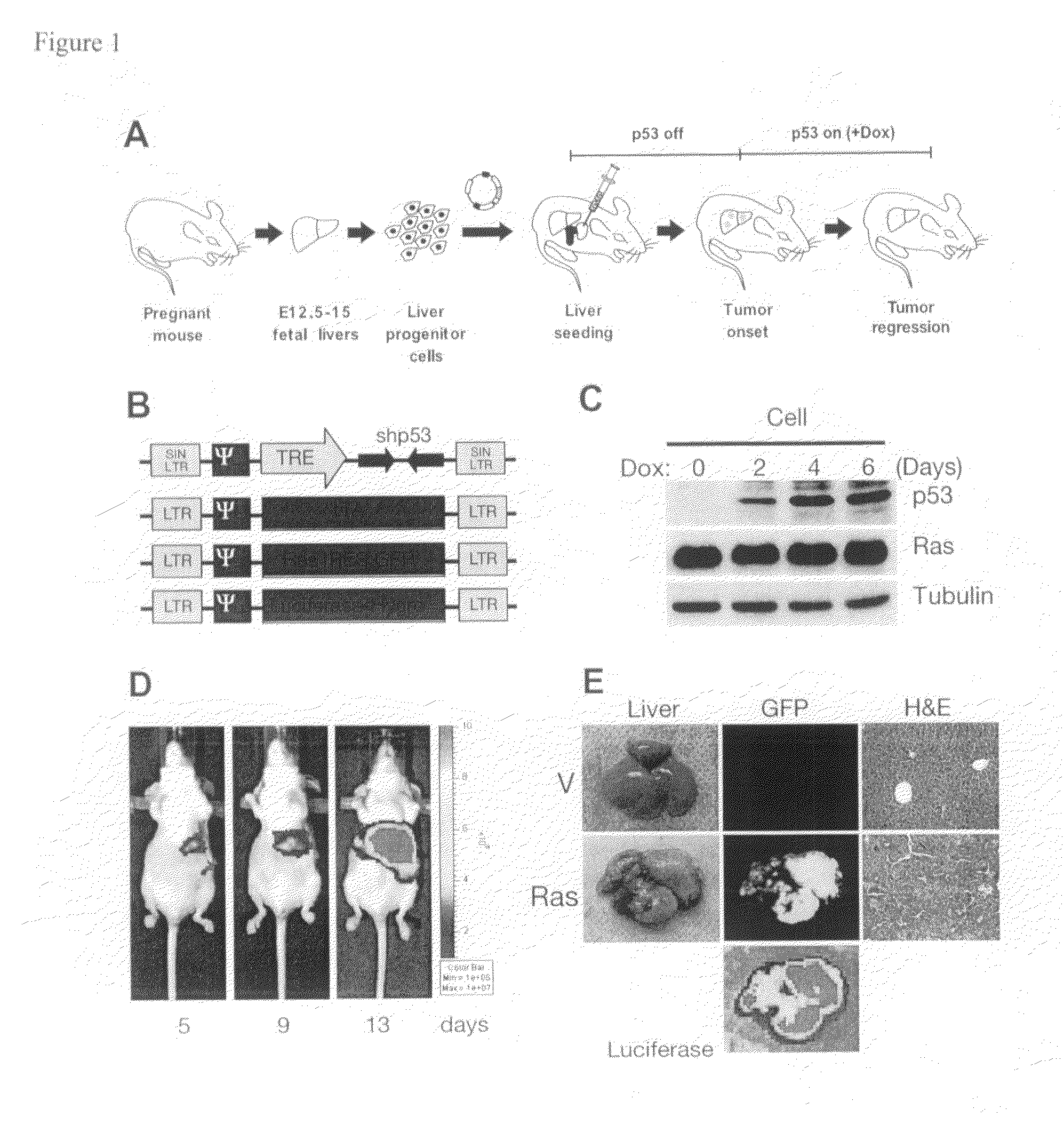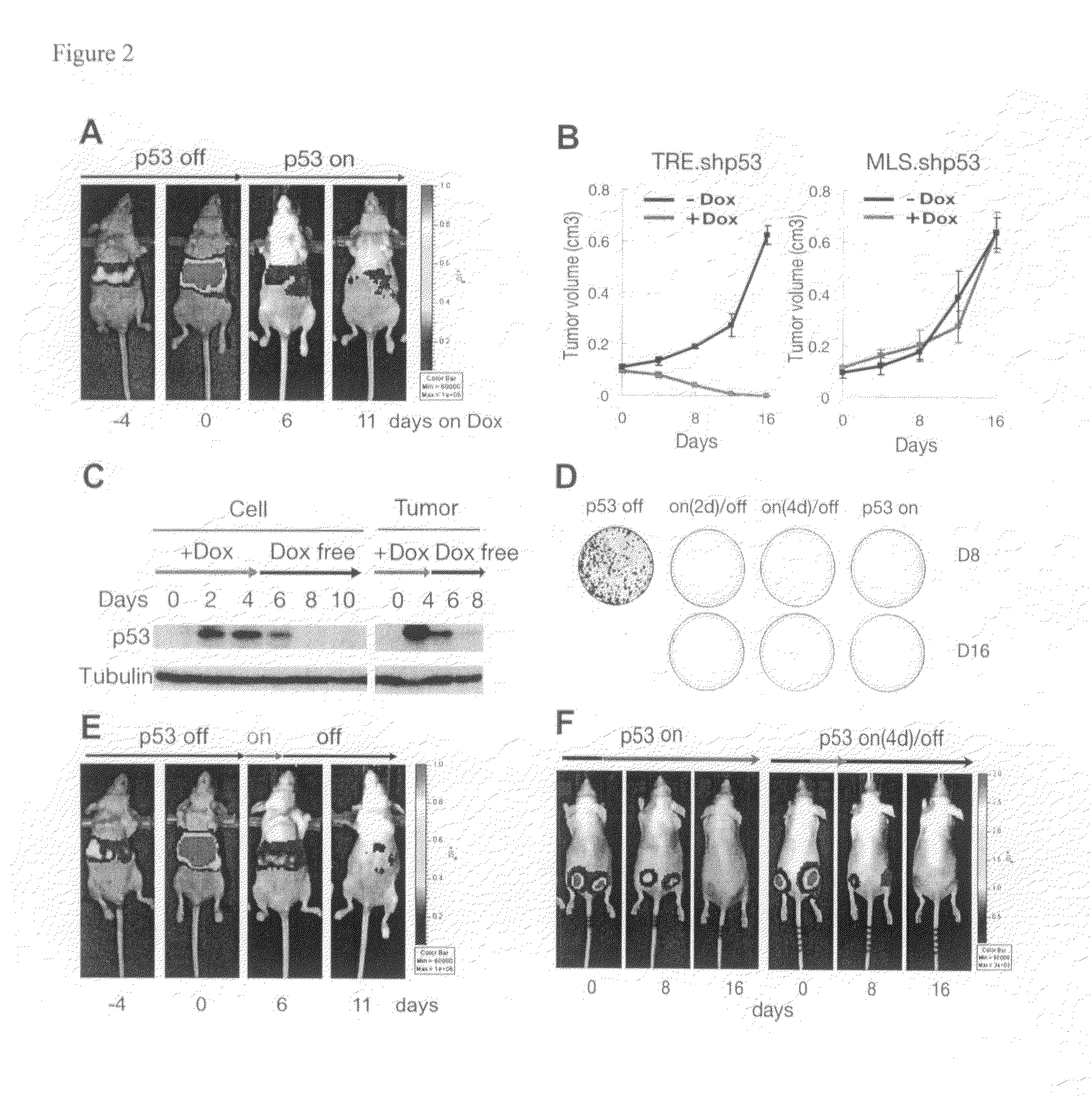Orthotopic, controllable, and genetically tractable non-human animal model for cancer
a non-human animal model and cancer technology, applied in the direction of viruses, dna/rna fragmentation, drug compositions, etc., can solve the problems of ineffective systemic chemotherapeutic treatment, difficult to cure these tumors, and no single drug or drug combination prolongs survival, etc., to achieve high resolution
- Summary
- Abstract
- Description
- Claims
- Application Information
AI Technical Summary
Benefits of technology
Problems solved by technology
Method used
Image
Examples
example 1
[0276]Although cancer arises from a combination of mutations in oncogenes and tumor suppressor genes, the extent to which tumor suppressor gene loss is required for the maintenance of established tumors is poorly understood. Using a conditional RNA interference and a mosaic mouse model of liver carcinoma, Applicants demonstrate that even brief reactivation of endogenous p53 in p53-deficient tumors can produce complete tumor regressions in vivo. Applicants also made the surprising discovery that hepatocarcinomas did not display apoptosis in response to p53 reactivation. Instead, reactivated p53 activated a senescence program that was associated with cellular differentiation and the upregulation of inflammatory cytokines. This program, while producing only cell cycle arrest in vitro, also triggered an innate immune response that targeted the tumor cells and vasculature, thereby contributing to tumor clearance. Thus Applicants have demonstrated that p53 loss is required for the mainten...
example 2
[0298]Senescence is a fail-safe mechanism to prevent malignant tumor, in that senescence program controlled by p53 and p16INK4a contributes to the outcome of chemotherapies. In addition, some differentiation-inducing therapies also activate senescence pathways in tumors.
[0299]Example 1 above have shown that reactivation of p53 in the liver cancer model leads to tumor regression by inducing senescence and an accompanied immune response. Specifically, Applicants have shown that macrophages (and neutrophiles) are involved in clearing the senescent tumor cells in vivo. It is possible that senescent cells secret pro-inflammatory chemokines and up-regulating immune receptors that can trigger immune attack. Therefore, Applicants have established an in vitro model system to study how immune cells recognize and attack senescent cells, and what genes are involved in the process.
[0300]FIG. 10A is a schematic drawing showing the in vitro model system of the invention, comprising a co-culture of...
PUM
| Property | Measurement | Unit |
|---|---|---|
| pH | aaaaa | aaaaa |
| temperature | aaaaa | aaaaa |
| fluorescent | aaaaa | aaaaa |
Abstract
Description
Claims
Application Information
 Login to View More
Login to View More - R&D
- Intellectual Property
- Life Sciences
- Materials
- Tech Scout
- Unparalleled Data Quality
- Higher Quality Content
- 60% Fewer Hallucinations
Browse by: Latest US Patents, China's latest patents, Technical Efficacy Thesaurus, Application Domain, Technology Topic, Popular Technical Reports.
© 2025 PatSnap. All rights reserved.Legal|Privacy policy|Modern Slavery Act Transparency Statement|Sitemap|About US| Contact US: help@patsnap.com



